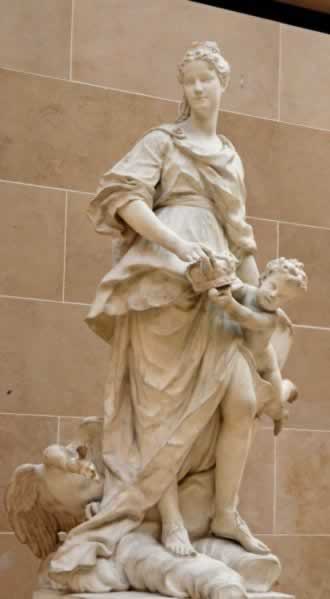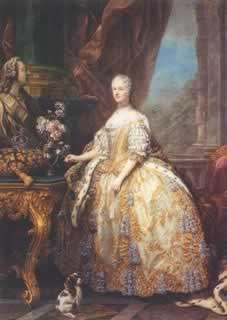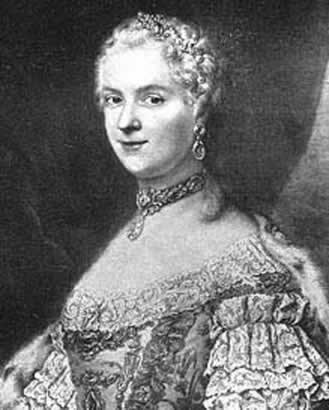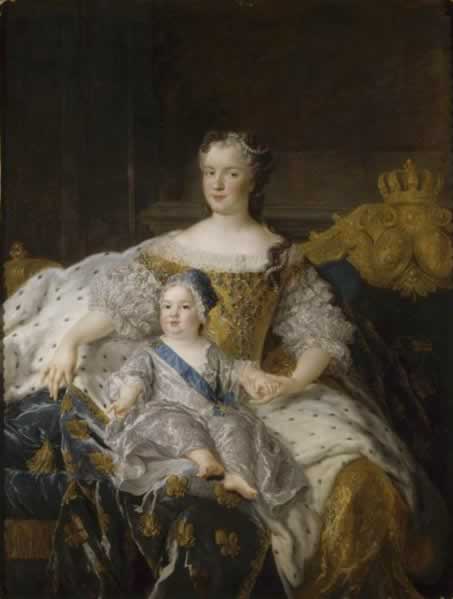Think that you may own a portrait of Maria Leszczyńska We authenticate, appraise and issue Certificates of Authenticity (COA) for all portraits of Maria Leszczyńska.

Portrait of Maria Leszczyńska with Allegorical Figures
Maria Karolina Zofia Felicja Leszczyńska was a queen consort of France and a Polish princess. She was a daughter of King Stanislaw Leszczyński of Poland (later Duke of Lorraine) and Katarzyna Opalińska. She married King Louis XV of France and was a grandmother of Louis XVI, Louis XVIII, and Charles X.

Portrait of Maria Leszczyńska, 1930, By Alexis Simon Belle
According to Polski Słownik Biograficzny her name was Maria Karolina Zofia Felicja Leszczyńska h. Wieniawa, which agrees with the entry for Louis XV in Burke's Royal Families of the World, where she appears as Marie-Caroline-Sophie-Félicité.
Marie's early life was troubled by her father's political misfortune. Ironically, King Stanisław's hopeless political career was eventually the reason that his daughter Marie became queen of France. Cardinal Fleury, Louis XV's Prime Minister, wanted to find his king a royal bride who would not drag France into any complicated political alliances. Since Stanisław's royal power no longer existed, Marie was chosen to marry the young French king.

Statue of Maria Leszczyńska by Guillaume Coustou the Elder
Their marriage was initially happy and they had many children, most of whom were incredibly loyal to their mother. Louis XV was a notorious womanizer, and several of his mistresses—particularly the glamorous Madame de Pompadour—eventually eclipsed Queen Marie's social status at Versailles. Most of his affairs were with her knowledge, and she either simply accepted them, or was powerless to stop them.
Marie was a devout Roman Catholic. Her major contribution to life at Versailles was the weekly event of Polish Choral Concerts. She also met the young Mozart, whom she found very charming.

Portrait of Maria Leszczyńska, 1740, by Louis Tocque
Her son Louis was married to Marie-Josèphe of Saxony, the daughter of her father Stanisławs' rival - August III of Poland, which caused initial friction, but was soon overcome, reportedly because the young princess was an admirer of the romantically unlucky former king of Poland. Marie's several grandsons received the name Stanislas among their christened names. Marie died in 1768, six years before her husband. His new mistress was a former prostitute, Madame du Barry. Marie's children and grandchildren sincerely grieved at Marie's death. Two years later, her grandson Louis-Auguste (Louis XVI) was married to a young Austrian archduchess, Marie Antoinette.

Portrait of Maria Leszczyńska with dog
Two of Marie's grandchildren met their deaths on the guillotine during the French Revolution: Princess Èlisabeth and Louis XVI (as well as the latter's wife Marie Antoinette). Another two grandchildren, Louis XVIII and Charles X, became kings of France (after the restoration of the monarchy in 1814). Marie is a major character in the novel The Royal Merry-Go-Round, the story of Louis XV's adventurous love life. In the anime Le Chevalier D'Eon she is one of the characters manipulating many of the events in the story.

Portrait of Maria Leszczyńska, artist unknown
Though presumed to be not too clever, Maria Leszczyńska was an author of at least a few quips. It is said that following the death of the Protestant marshall Maurice de Saxe she remarked: "How sad, that we cannot sing "De Profundis", for a man thanks to whom we sung so often "Te Deum"" On September 4, 1725 she married Louis XV of France. They had ten children:
- Louise-Elisabeth (August 14, 1727 - December 6, 1759), Duchess of Parma
- Henriette-Anne (August 14, 1727 - February 10, 1752)
- Marie-Louise (July 28, 1728 - February 19, 1733)
- Louis, Dauphin of France (September 4, 1729 - December 20, 1765)
- Philippe (August 30, 1730 - April 17, 1733)
- Adélaïde (March 23, 1732 - February 27, 1800)
- Victoire-Louise (May 11, 1733 - June 7, 1799)
- Sophie-Philippine (July 17, 1734 - March 3, 1782)
- stillborn child (March 28, 1735)
- Thérèse-Félicitè (May 16, 1736 - September 28, 1744)
- Louise-Marie (July 5, 1737 - December 23, 1787)
As a monarch, Leszczyńska had numerous portraits painted of her by famous French artists of the day like Nattier and Tocque. She was often depicted in classical royal poses and dress, often featuring her dogs. These paintings generally feature just Leszczyńska; though there is proof that she enjoyed and loved her children, they are not usually included in her portraits. This is perhaps a result of the high infant mortality rates of the day, especially among royal families. A few portraits featuring the queen and her children do exist, but they are especially rare.

Portrait of Maria Leszczyńska with Louis, the Dauphin of France, by Alexis Simon Belle
While royal paintings of Leszczyńska as a queen are abundant, there are far less of her as a young Polish princess. Also absent are paintings of her latter days, one of the last being painted in 1748. This was perhaps due to vanity on her part, as in her 1748 painting by Nattier and la Tour she already appears to be older than her 45 years.

Portrait of Maria Leszczyńska, 1748, by Jean Marc Nattier

Portrait of Maria Leszczyńska, 1748, by Maurice Quentin de la Tour
Leszczyńska had a large family in both Poland and France, therefore making it highly possible for images of her to still exist in private collections. It is also very possible that portraits of Leszczyńska were pillaged from Versailles during the French Revolution, and are still uncounted for, locked away in storage somewhere. Also missing are miniature portraits; surely some were made during her lifetime as gifts to her husband or children, but those are few and far between as well. Many of her paintings are housed again today in Versailles, as well as in public and private collections worldwide. Still wondering about a portrait in your family collection? Contact us...it could be a portrait of Maria Leszczyńska.
